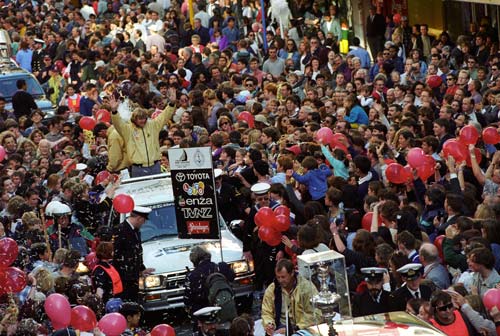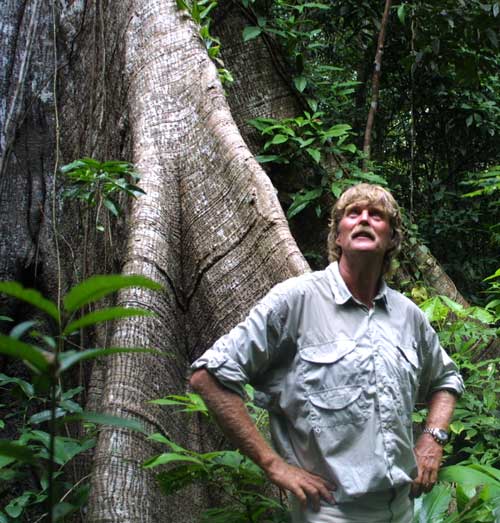Finally, the teacher had said to research about a famous New Zealander, Sir Peter Blake, which is one of New Zealand's most famous sailor (yachtsman) which has won the Whitbread Round the World and America's Cup. We had to make a biography about him.
Sir Peter Blake
Sir Peter Blake which was a famous New Zealander which is born on 1 October 1948 in Auckland. Peter Blake grew up in a wooden bungalow in Bayswater near Auckland's Waitemata Harbour. He had educated in Bayswater Primary School, Belmont Intermediate, Takapuna Grammar School and Auckland Technical Institute, 1966 to 1969 - earned New Zealand Certificate of Engineering.
Peter Blake is famous because he was the only sailor to take part in the first five Whitbread Round the World races. He lead New Zealand by having two America’s Cup victories (1995 and 2000). He is the world's most famous sailor because he went more faster and further than any other sailor in the world. Peter Blake has participated in two events:
 |
| Peter Blake Credit: https://en.wikipedia.org/ |
Sir Peter Blake which was a famous New Zealander which is born on 1 October 1948 in Auckland. Peter Blake grew up in a wooden bungalow in Bayswater near Auckland's Waitemata Harbour. He had educated in Bayswater Primary School, Belmont Intermediate, Takapuna Grammar School and Auckland Technical Institute, 1966 to 1969 - earned New Zealand Certificate of Engineering.
 |
| Center: Seamaster Right: Peter Blake Credit: https://www.radionz.co.nz/ |
 |
| Peter Blake coming back to New Zealand after a historic win in America's Cup. Credit: https://teara.govt.nz/ |
- Whitbread Round the World - 1989-90 - Steinlager 2 (boat name)
- America’s Cup - 1995 America’s Cup - Royal New Zealand Yacht Squadron (boat name)
- Location: San Diego, United States
- Dates: 6-13 May 1995
- Yacht: Black Magic - NZL 32
- Role: Sail Trimmer
- America’s Cup - 2000 America’s Cup - did not sail with the team, acting as on-shore manager.
Sir Peter Blake has won two awards, Laureus World Sports Award for Sport for Good and Laureus World Sports Award for Lifetime Achievement. Also, he has written books about his adventure:
- Peter Blake: Adventure
- The Last Great Adventure of Sir Peter Blake: With Seamaster and Blakexpeditions from Antarctica to the Amazon: Sir Peter Blake's Logbooks
- An Introduction to Sailing
- Blake's Odyssey: The Round the World Race with Ceramco New Zealand
- Lion: The Round the World Race with Lion New Zealand
- Peter Blake's Yachting Book
- Peter Blake: Autobiography

 |
| Peter Blake in the Amazon Credit: https://teara.govt.nz/ |
After Sir Peter Blake's career in sailing, he went to do an environmental exploration trip in (Amazon) Macapá, Amapá, Brazil, South America, to fight over pollution and global warming for the United Nations (UN). Seamaster (Peter Blake's boat) was about to leave the Amazon, on the night of 5 December 2001, a group of pirates had attacked Seamaster, they were wearing crash helmets and balaclavas. One of the pirates had a gun to the head of a crewmember. Peter Blake was shot on the back while defending his crew. Peter Blake's funeral was at St Thomas à Becket Church, Warblington, Hampshire, England and he was buried there.
I hope you like my post about Peter Blake. Comment down below if you have learnt something new. Have a cool day!! Bye!!
I hope you like my post about Peter Blake. Comment down below if you have learnt something new. Have a cool day!! Bye!!
